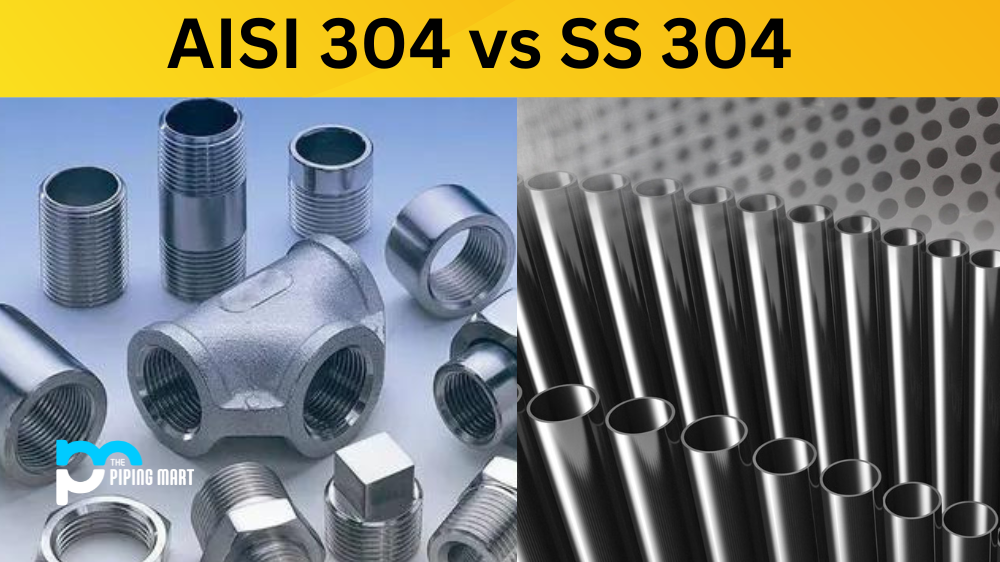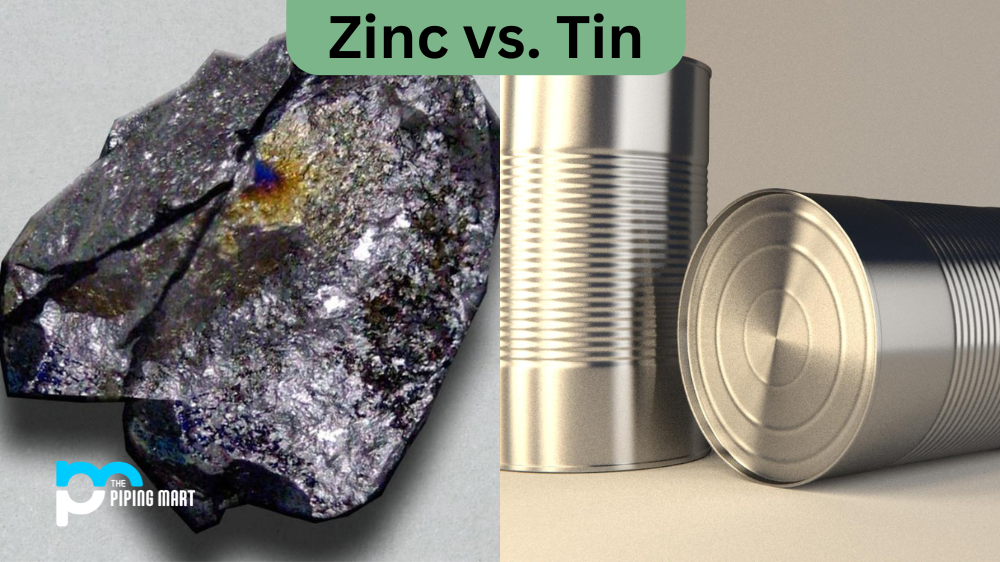If you are looking for a high-quality stainless steel material, you may have come across two acronyms—AISI 304 and SS 304. While these two terms are often used interchangeably, there are some differences between the two that you should be aware of. Let’s take a look at what sets them apart.
Difference Between AISI 304 and SS 304
AISI 304 and SS 304 are two types of stainless steel used in manufacturing. While both types of steel are similar, there are some critical differences between them.
Composition
The first difference between AISI 304 and SS 304 is in their composition. AISI 304 is the American Iron and Steel Institute designation for the alloy commonly known as “304 stainless steel”, while SS stands for Stainless Steel, the European title. Both compositions contain 18% chromium, 8% nickel and a small amount of manganese. Still, they differ in carbon content—the American version has approximately 0.08% carbon content, while the European version contains about 0.12%. The composition of SS304 also includes sulfur, silicon, phosphorus and nitrogen in varying amounts depending on the manufacturer.
Properties
Due to its higher carbon content, SS304 generally has better mechanical properties than AISI304, including greater strength and hardness at elevated temperatures and higher corrosion resistance due to increased chromium levels. However, due to its lower carbon content, AISI304 still has excellent corrosion resistance, even in highly corrosive environments. It is considerably easier to weld than SS 304 since it does not require post-weld heat treatment (PWHT). In addition, both varieties of this alloy are non-magnetic, so they can be used in applications where magnetism is not desired, such as food preparation or medical equipment.
Cost
Another critical difference between AISI 304 and SS 304 is their cost. AISI 304 is typically less expensive than SS 304 due to the lower price of molybdenum.
Uses
AISI 304 and SS 304 can be used for a variety of applications. AISI 304 is often used in food processing equipment, as it can withstand corrosion from acids and other chemicals. SS 304 is often used in medical devices and surgical instruments, as it can resist corrosion from body fluids and sterilization methods.
Welding
A critical difference between AISI 304 and SS 304 is their weldability. AISI 304 can be welded using all standard welding methods, while SS304 must be pre-heated before welding to prevent cracking.
Machinability
Another difference between AISI304 and SS304 is their machinability. AISI304 is more accessible to the machine than SS304, as it is slightly softer due to the lower content of molybdenum
Applications
This alloy is widely used in various applications due to its excellent corrosion resistance properties. Typical uses include kitchenware such as sinks and utensils; medical equipment such as surgical instruments; automotive components such as exhaust systems; industrial machinery parts; construction materials such as handrails; chemical plants; wastewater treatment plants; and aircraft structures such as wings or fuselages. Due to its higher strength properties, SS304 is often preferred for applications that require high tensile strength or elevated temperature use versus general purpose applications that could use either variety depending on budget constraints or other considerations.
Conclusion
In conclusion, understanding the differences between AISI 304 and SS 304 will help you choose the suitable material for your application, depending on your needs regarding cost efficiency versus performance requirements. While both varieties offer excellent corrosion resistance properties due to their chromium content, they differ in their mechanical properties, with the European version having slightly better performance characteristics due to its higher carbon content. Therefore it’s essential to consider each case individually when deciding which one to use for your project based on factors like budget constraints or specific performance requirements.

Abhishek is a seasoned blogger and industry expert, sharing his insights and knowledge on various topics. With his research, Abhishek offers valuable insights and tips for professionals and enthusiasts. Follow him for expert advice on the latest trends and developments in the metal industry.




